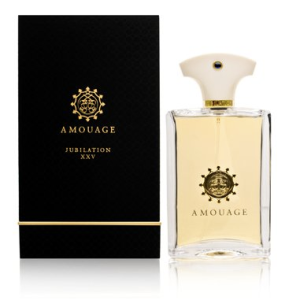The royal perfume house of Amouage would be perfect for a fairy tale or Greek myth. It would be the story of King Midas, and all he touched would be perfume gold. It would have Ali Baba and a cave filled with treasures of scent and spice, incense and frankincense — not stolen by thieves but given freely by the Sultan with the order to create the most luxurious scent in all the land. Actually, that last bit happened in real life — with the Sultan of Oman.
As the renowned perfume critic, Luca Turin, said in a 2007 German magazine article:
The story of Amouage is remarkable. Twenty five years ago an Omani prince decided that his country, renowned since Egyptian times for the quality of its frankincense, home to the unique Green Mountain rose and on whose beaches half the world’s ambergris lands at random, needed a perfume firm that would take on the world’s greatest.
So, in 1983, His Majesty Sultan Qaboos bin Said, the ruler of the Sultanate of Oman, ordered His Highness Sayyid Hamad bin Hamoud al bu Said to do just that. And the fame of the perfumes have spread ever since, helped by the fact that one of them (Gold) was once the most expensive perfume in the world.
In 2010, Amouage launched a new line entitled The Library Collection which was meant to be a “poetic homage to the art of living.” They were
inspired by the recollections and fragments that collectively represent a tome of memories. The name of the collection is drawn from the notion of the hidden treasures in a library; a notion that kindles our desire to discover, to learn.
 In 2012, Amouage added Opus VI to its line and it was, surprisingly, the first amber perfume released by the royal house. Amouage describes Opus VI as “an amber, leather and woody fragrance inspired by the destruction and reinvention of knowledge and memories. Symbolising the end of a love affair, eternity is represented as broken memories in the design of the box.”
In 2012, Amouage added Opus VI to its line and it was, surprisingly, the first amber perfume released by the royal house. Amouage describes Opus VI as “an amber, leather and woody fragrance inspired by the destruction and reinvention of knowledge and memories. Symbolising the end of a love affair, eternity is represented as broken memories in the design of the box.”
The notes, as compiled from both Amouage‘s website and Fragrantica, are as follows:
top: Sichuan pepper, Frankincense, St. Thomas Bay (bay rum)
heart: Periploca [silk vine], Cypriol [papyrus grass oil], Patchouli
base: Ambranum, Z11, Cistus [Labdanum or rock rose], sandalwood, Citrus
Since a lot of these ingredients are extremely uncommon, I’m going to take time to go through a few of them. According to Fragrantica, Periploca is “a plant that grows in the Balkans with an odor profile between almond and incense.” Elsewhere, however, the scent has been compared to jasmine; on Basenotes, some remark that the aroma is unpleasant and akin to rotting vegetables. In short, there is no consensus. As for the other unusual notes, cypriol is a kind of papyrus grass, and ambranum is a synthetic compound that replicate the smell of amber, while Z11 is a synthetic that smells like dry wood.
The Amouage press release quoted by Fragrantica explains not only the deliberate reason why the synthetics were used in lieu of the more traditional elements, but also elaborates further on the whole issue of heartache and memories:
Opus VI, presented as a romantic fragrance creating its own vivid memories, is a woody amber oriental, inspired by the traditional medicine for broken hearts, amber. But whereas traditional amber is created through balsamic raw materials, creative director Christopher Chong approaches this most traditional concept through a modern lens, fusing synthetic molecules with a decidedly modern olfactory profile, such as Ambranum and Z11. This supposedly helps create a discordant effect which is not unlike the emotional frame of when someone tries to forget the memories of a heartache! According to Chong: ‘Personal memories are a fragmented journey into our lives. A source of profound knowledge, a sort of secret diary in the minds of each of us.’
Hm. I haven’t the foggiest idea what heartache smells like but, whatever it is, I don’t think it smells like this! Opus VI is a very labdanum-heavy amber scent with lots of incense, patchouli and some spiciness that, to me, evokes nothing more than an old Bedouin sheikh who uses very heavy attars and perfumed oil in his beard in the traditional Muslim manner. No heartbreak, no profound knowledge, no secret diary. To me, Opus VI is a very traditional Middle Eastern scent that I think is tolerable at times, but hugely over-priced for what it is.
Opus VI explodes on my skin with super-charged labdanum. You can read my Glossary (linked up above) for full details on what labdanum is but, in a nutshell, it’s a very leathery, heavy, balsam-like amber resin. Here, its usual masculine, dirty underpinnings are heightened to an extreme degree. For once, I am transported back thousands of years to ancient times when shepherds would scrape the resin off the chests and beards of goats who had clambered on or around the rock rose. There is almost a sweaty, goat-like feel to the labdanum and, even for one like myself who usually adores the note, it’s a little too animalic in those opening minutes.
Though the labdanum dominates, there are other notes in that initial start. There is quite a bit of boozy rum — not boozy amber, but something more akin to actual rum. Underneath that, there is chili pepper, frankincense smoke, unctuously dirty, black patchouli, and almost a dry paper element. The second time I tried Opus VI, I could also detect notes that felt like bay leaf, cloves and cardamom. As the minutes pass, the labdanum starts to become a tiny bit less dirty and animalic, leaving more of a general feel of extremely thick amber with boozy rum. There is an undertone to the labdanum, perhaps from the strong patchouli, that sometimes seems almost like leathery toffee or slightly burnt butterscotch; it creates a visual colour image of burnt umber or blackened terracotta. Skirting around the edges of all this leathery labdanum, there is a citrus note that flickers like a candle in a wind.
Five minutes in, the smoke and spices increase. The frankincense becomes stronger, evoking the scent of a burning bonfire in the fall. The patchouli note is much more noticeable, too, but it is the chili pepper that impresses me the most. It definitely feels like Sichuan pepper and serves to add some spicy heat to the dominant accord of thick, balsamic resins.
Those resins soften considerably as time passes. The labdanum’s shriekingly dirty side becomes a little less extreme, leaving an overall impression of honeyed amber, patchouli, incense and spice in the richest way possible. Yet, surprisingly, the perfume’s strength in the first 30 minutes is not matched by its sillage; Opus VI’s projection drops rapidly to something much less aggressive and much softer. In fact, the perfume as whole starts to feel quite soft. I realise that seems like a contradiction given those heavy notes and their strength, but Opus VI turns into something that isn’t opaque and thick in weight.
Something about the spiciness of Opus VI in the first 30 minutes evokes the dry-down of vintage Opium. The Sichuan pepper, in conjunction with the other notes, creates something like the cloves, spices, heavy labdanum, sandalwood and citrus feel of (real, vintage) Opium’s final hours. Opus VI is nowhere as gorgeous, complex, sophisticated, layered or nuanced as Opium — my all-time favorite perfume — but there is definitely some nod to the great, benchmark Oriental here. It is quite a surprise, and a pleasant one at that. Perhaps the greatest surprise, however, is that none of the notes feel synthetic. Amouage may have used Ambranum to replicate amber and Z11 for the aroma of dry wood, but Opus VI smells as if only real (and very expensive) ingredients have been used. There is nothing chemical, artificial or abrasive about Opus VI, though the dirty nature of the labdanum may be a little excessive in the first twenty minutes.
At the one hour mark, the spices recede, the labdanum turns more musky, and there is the vague hint of some jasmine. I’ll assume it is from the Periploca since I’ve never actually smelled the plant and, prior to reviewing Opus VI, had never even heard of it, either. Whatever the reason, there is a quiet floral aspect to Opus VI but it is fleeting. Soon, all that really remains of the scent is labdanum intertwined with strong frankincense smoke, black patchouli, musk, and a vague, abstract sense of spices — all over a dry wood undertone. The odd thing is that musky element. There is a definite animalic, skanky side to the resin now that evokes both civet and, to a small degree, the pure musk of Parfum d’Empire‘s Musc Tonkin. I can’t say that I particularly like it. Even odder for me to wrap my head around is just how paradoxically sheer and light the perfume is, while certain notes feel so unctously thick. They aren’t actually thick at all, but something about that labdanum….
After a few hours, the main threads of leathery, musky labdanum with dirty, black patchouli, and incense remain the same, but, now, a very strong accord of dry woods starts to appear. It’s not any one particular type of wood; rather, it’s just an abstract and extremely arid vague “woods” note. The dryness is huge, undoubtedly due to the Z11, and it creates a surprisingly odd contrast. Honestly, I’m not crazy about the dissonance and overall polarity.
Opus VI has astounding longevity, so its drydown phase finally starts about 8 hours later. It is simple: just amorphous amber, honey, beeswax and benzoin which creates a vague sense of nutty, caramel, amber. I tested Opus VI twice, each time using a lesser amount. The first time, I put on the equivalent of 2 good sprays and the perfume lasted almost 15 hours! On me! It was mind-boggling. The second time, I dabbed on what would essentially amount to one smallish to moderate spray and it lasted 12 hours, with the perfume lingering for much of that time right on the skin. Almost no projection at all.
What was interesting to me was that the lesser amount significantly changed what small nuances were detectable in the scent. Using only about one spray, Opus VI became a labdanum and patchouli fragrance with beeswax, and only the vaguest of other elements to it. It also became a skin scent in about thirty-five minutes on me. As a whole, this is not a perfume with massive sillage. On my first test, with 2 sprays, it became a skin scent within about 2 hours but even before, it didn’t projected out beyond a few inches. Opus VI is strong with a greater amount, but it’s also surprisingly sheer.
I liked the perfume less and less with every test. I actually put it on a third time just to be sure but, to be honest, I’d really had enough of it by that time and only lasted an hour before I washed it off. It wasn’t just the sometimes cloying, dirty, skanky aspects of the labdanum in those opening phases; I was also mentally bored by the scent’s linearity and something about its progression really turned me off. Yet, the reviews from other perfume bloggers are uniformly positive, even a little gushing. Whether it’s The Non-Blonde, Olfactoria’s Travels, The Candy Perfume Boy, or the always laudatory, always effusive, never (ever) critical CaFleureBon, the reviews are overwhelmingly adoring.
Well, apparently, I’m much harder to please when it comes orientals. I am a hardcore Orientalist down to my very fingertips, and if there is one thing I know extremely well is opulent, super-rich, powerful Orientals. There is, in fact, nothing I love more. But, to Opus VI, I give a nonchalant shrug. It’s fine, I suppose. Parts of it are actually quite nice on the very first go-round, namely the part where it smells like a less nuanced, less sophisticated, less interesting, less spicy and less potent version of my beloved Opium. Sure, Opus VI is quite rich as compared to something like a L’Artisan scent or Kilian’s boring Amber Oud (that actually has almost no oud in it at all). But that doesn’t mean Opus VI is a particularly interesting, complex Oriental except on the relative scale of things.
I started out being generally underwhelmed and unimpressed but, with successive applications, my slightly disdainful indifference turned into something much more negative. I love labdanum, have tested quite a bit of labdanum fragrances (especially recently), and I adore heavy, opaque, potent, resinously rich Orientals. At best, Opus VI is a simple but boring labdanum-dominant fragrance that is typically Middle Eastern like a million attars (or ittars) from the region. I’ve spent time in the Middle East and this is a pretty traditional, generic scent — so much so that I kept imagining some Arab man perfuming his beard or mustache with the oil of it. At worst, Opus VI is a monochromatic, linear, occasionally unpleasant fragrance that tired me out enormously, and which actually made me question just how much I loved labdanum as a whole.
And that’s even before we get to the price. $325 for this? Never in a million years. I think it’s massively over-priced for what it is. Frankly, I don’t understand the hype at all. I could perhaps understand paying Amouage prices for something like Jubilation 25 or maybe even Jubilation XXV — but never for Opus VI. I suppose I should add that a portion of the perfume’s high price probably stems from the packaging: all Amouage fragrances come in a bottle of expensive French crystal with some gold plating and, occasionally, sterling silver as well. Here, Opus VI
is adorned with a gold label simply declaring Opus and the number of the fragrance in roman numerals. The metal cap is gold-plated with the very regal and distinctive Amouage shield resting on the top protected under a transparent coat. The box is reminiscent of a tome (a volume of scholarly book). To complement the bottle’s contemporary classic look, the box is covered in champagne coloured fabric to give it an illustrious appearance.
Fine. Still not worth $325 though, in my opinion. In fact, I wouldn’t wear Opus VI if it were given to me for free.






 tricks her new husband into saving her life by enchanting him with a different tale each night. The powerful Persian king had become bitter and enraged by the infidelity of his former wife, so each day he would marry a virgin, only to behead them the next morning before they could betray him. Eventually, the kingdom ran out of virgins and the Vizier (or Prime Minister) was at a loss to know how to placate his bloodthirsty, vengeful king. The Vizier’s daughter, Scheherazade, offered herself as a volunteer; she had a plan to tame the king and stop the bloodshed destroying the land.
tricks her new husband into saving her life by enchanting him with a different tale each night. The powerful Persian king had become bitter and enraged by the infidelity of his former wife, so each day he would marry a virgin, only to behead them the next morning before they could betray him. Eventually, the kingdom ran out of virgins and the Vizier (or Prime Minister) was at a loss to know how to placate his bloodthirsty, vengeful king. The Vizier’s daughter, Scheherazade, offered herself as a volunteer; she had a plan to tame the king and stop the bloodshed destroying the land. never finished it and stopped at the most exciting part right before dawn, the time of her impending execution. The king, determined to know how the story ended, was forced to delay her sentence. That next night, she finished the tale but began an even more exciting story. Once again, she stopped exactly midway shortly before dawn, and the curious king spared her life so that he might hear the conclusion. This continued for a thousand and one nights, as Scheherazade weaved her magic through stories of Aladdin and the Genie, Ali Baba, Sinbad and many more. By the end, the king had fallen in love with the clever Scheherazade and made her his queen.
never finished it and stopped at the most exciting part right before dawn, the time of her impending execution. The king, determined to know how the story ended, was forced to delay her sentence. That next night, she finished the tale but began an even more exciting story. Once again, she stopped exactly midway shortly before dawn, and the curious king spared her life so that he might hear the conclusion. This continued for a thousand and one nights, as Scheherazade weaved her magic through stories of Aladdin and the Genie, Ali Baba, Sinbad and many more. By the end, the king had fallen in love with the clever Scheherazade and made her his queen.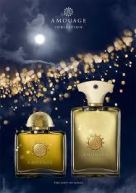

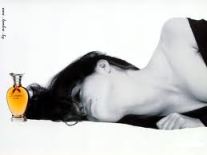

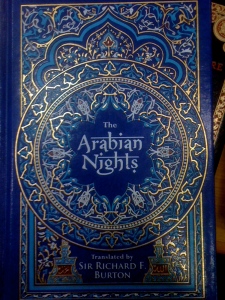 have Ali Baba and a cave filled with treasures of scent and spice, incense and frankincense — not stolen by thieves but given freely by the Sultan with the order to create the most luxurious scent in all the land. Or, it would be the story of “Perfume” without serial killers and death, and with a happy ending.
have Ali Baba and a cave filled with treasures of scent and spice, incense and frankincense — not stolen by thieves but given freely by the Sultan with the order to create the most luxurious scent in all the land. Or, it would be the story of “Perfume” without serial killers and death, and with a happy ending.
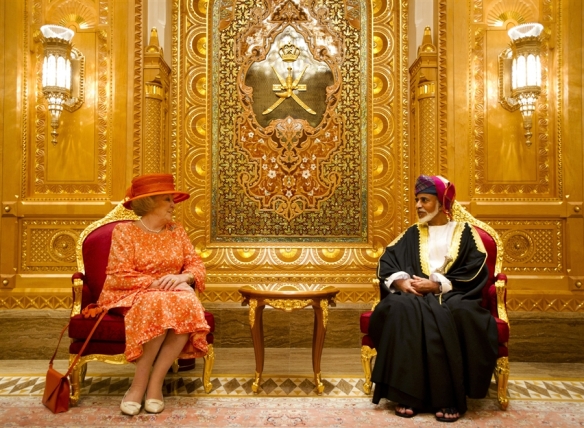
 under the guidance of its artistic director, Christopher Chong, and created by the famous orientalist nose, Bertrand Duchaufour. (“Orientalist” is Luca Turin’s description, not mine.) The men’s version was called Jubilation XXV and the women’s version was Jubilation 25. Both versions are eau de parfum concentration and both are essentially considered to be unisex fragrances. Certainly both genders seem to wear the different versions. I have both and plan to review Jubilation 25 tomorrow. For now, let’s focus on the men’s version.
under the guidance of its artistic director, Christopher Chong, and created by the famous orientalist nose, Bertrand Duchaufour. (“Orientalist” is Luca Turin’s description, not mine.) The men’s version was called Jubilation XXV and the women’s version was Jubilation 25. Both versions are eau de parfum concentration and both are essentially considered to be unisex fragrances. Certainly both genders seem to wear the different versions. I have both and plan to review Jubilation 25 tomorrow. For now, let’s focus on the men’s version.